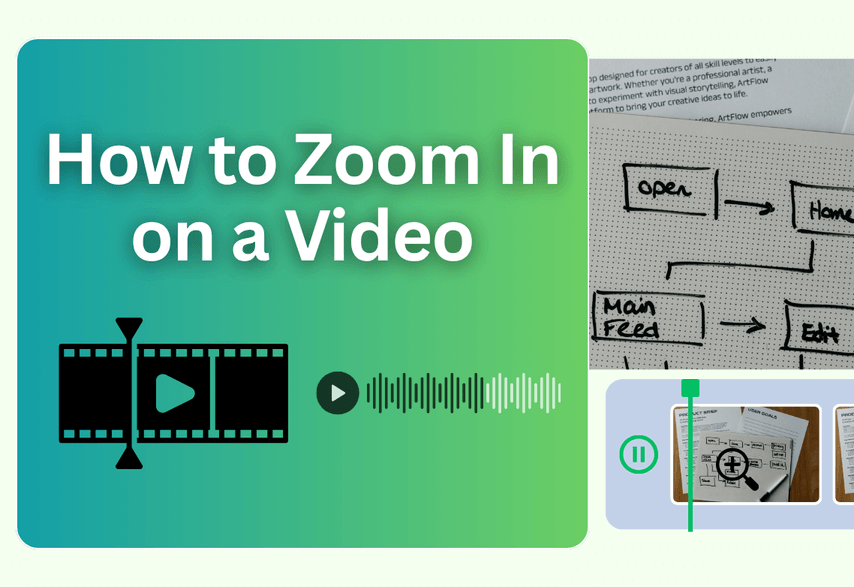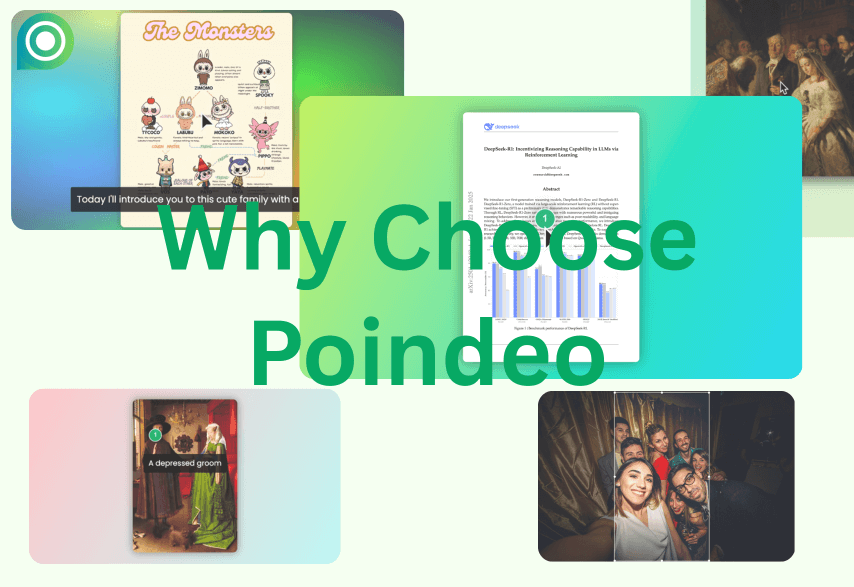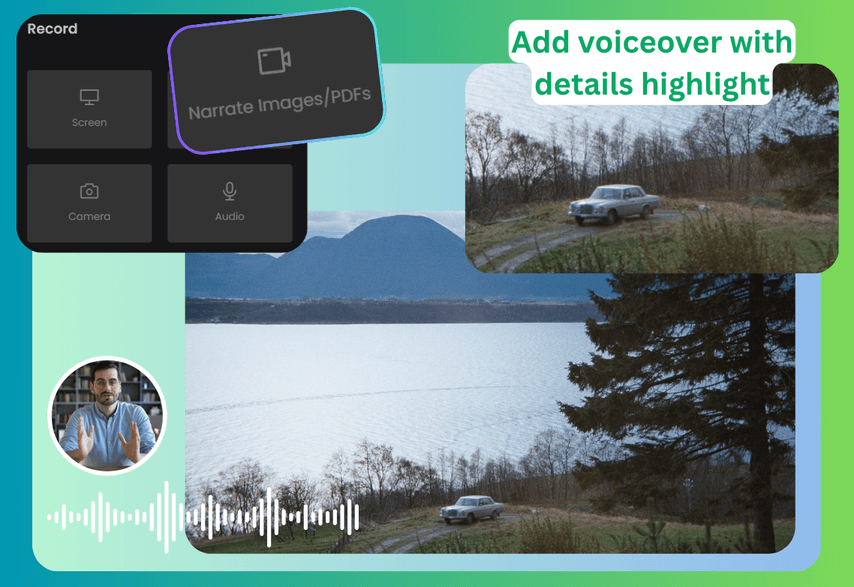The purpose of a document isn't just to look good; it's to communicate effectively. As a founder, I've often found that even when a Standard Operating Procedure (SOP) is written with perfect clarity, many people still don't understand it, or worse, they don't bother to read it. The document becomes a useless file. This is precisely why we need to supplement our documents with verbal explanations to ensure the message is received correctly.
Many products on the market recommend ways to add audio to a PDF, but I found them all to be too complex and not intuitive. They force you to pre-record your audio, then upload it file by file. For the viewer, the experience is just as fragmented—they have to hunt for a small icon and click play, often without knowing what the audio even contains.
I wanted a solution that was seamless and convenient for both the creator and the audience. If you're looking for that solution, the answer is Poindeo.
The Best Solution: Poindeo - The Tool That Makes Your PDFs Talk
After reviewing all the traditional methods, we found that Poindeo is the only tool that fundamentally solves the core problems of a complicated creation process and a poor user experience. It doesn't just patch a feature onto a PDF; it reimagines the document as a modern communication tool.
How Poindeo Solves Every Pain Point:
- For Creators: Intuitive, One-Click Recording
This is the game-changer. Forget pre-recording and uploading audio files. With Poindeo, you simply upload your PDF, click anywhere on the page, and start recording your voice-over directly. You explain the document naturally as you go, just like a live presentation. Your voice is automatically synced to the relevant part of the page.
- For Viewers: A Seamless, Engaging Experience
When you share the video, the viewer's experience is effortless. It feels like a guided video tutorial, not a static PDF with hidden audio clips. They see exactly what you're talking about as they hear your explanation.
- Beyond PDF: A Living, Interactive Presentation
Poindeo transforms your static PDF into a dynamic online presentation. You can update the audio or the document at any time without having to re-export and re-send files to everyone.
If you want the fastest, most effective way to embed audio in a PDF and ensure your message is heard, Poindeo is the definitive solution.
Traditional Methods (And Why They Fall Short)
If you're still curious about the older, more complicated ways to add sound to a PDF, here they are.
Method 1: Adobe Acrobat Pro (The Professional Standard)
How it Works: As the industry's most powerful PDF editor, Acrobat allows you to use its "Rich Media" tool to insert pre-recorded audio files into a specific area of the PDF.
Pros: Feature-rich and powerful for professional publishing.
Drawbacks: Expensive and has a steep learning curve. The process is slow (record audio separately, upload, place it, configure it). The viewer experience is disjointed, requiring them to manually find and click play.
Method 2: Foxit PDF Editor (The Affordable Alternative)
How it Works: Foxit offers similar audio and video embedding features to Acrobat, but at a more accessible price point.
Pros: A good budget-friendly alternative to Acrobat.
Drawbacks: It shares the same fundamental flaw: the cumbersome "record-first, then-upload" workflow. Furthermore, embedded audio can face compatibility issues and may not play correctly in different PDF readers.
Method 3: Free Online Tools (The Limited Option)
How it Works: Most free online PDF editors don't truly embed audio. Instead, they allow you to add a hyperlink to an externally hosted audio file (like a Google Drive link).
Pros: Free and accessible from any browser.
Drawbacks: This is not a true audio embed. The viewer must have an internet connection and is often taken to a new tab to listen, creating a terrible user experience. The viewer sees a generic link, giving them no context or reason to click.
Frequently Asked Questions About Adding Audio to PDFs
1. Can I add audio to a PDF for free?
Yes, you can add audio to a PDF for free using some online tools. However, these tools typically only allow you to link to an external audio file, not truly embed it. This means the listener needs an internet connection, and the experience is not seamless. For a more professional and integrated solution, a tool like Poindeo offers a far superior experience for both the creator and the end-user, often with a free trial or tier to get started.
2. What's the difference between embedding audio and linking audio?
Embedding audio means the sound file becomes a part of the PDF document itself. Once downloaded, it can often be played offline.
Linking audio means you are just placing a hyperlink on the PDF that points to an audio file stored online (e.g., on Google Drive). This requires the viewer to be online and often redirects them away from the document.
3. Why is Poindeo better than Adobe Acrobat for adding audio?
While Adobe Acrobat is a powerful tool, it's complex and requires a multi-step process: you must first record your audio in another application, save the file, and then use Acrobat's "Rich Media" tool to upload and place it. Poindeo simplifies this entire workflow by allowing you to record your audio directly onto the document page, creating a seamless, intuitive experience that saves significant time and effort.
Conclusion
In conclusion, while several methods exist to add audio to a PDF, only Poindeo was designed from the ground up for the ultimate goal: clear and effective communication. If you're tired of your important documents being ignored or misunderstood, this is the one-stop solution you need to try today.




